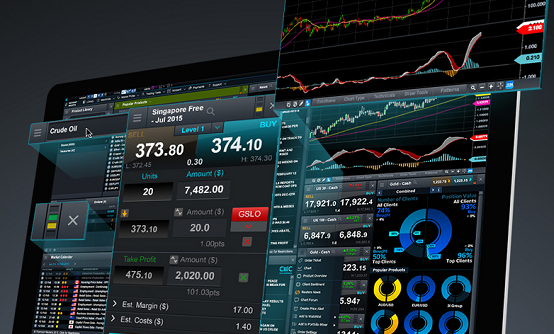
What is CFD Trading?
Contracts for difference or as popularly known, CFDs have been growing rapidly over the years and is a market that has attracted traders all over the world. A CFD is defined as an agreement made between two parties to make an exchange of the value between the opening and the closing prices of a contract. A trader can use CFDs to speculate the market changes of the numerous financial markets irrespective of whether the changes are indicating rise or fall of the prices. The market allows a trader to go long or short and get profits from the rise or fall of the prices respectively. This is advantage to a trader since it is possible to make profits from either price directions. Being a leveraged product, CFD trading allows a trader to expand their market exposure by depositing a small percentage of the full value of the underlying asset. CMC Markets is one of the leading companies offering CFDs for product such as shares, stock indices, treasuries, currency pairs and commodities.
Benefits of trading in CFDs
There are a number of reasons why CFD trading is better than the traditional trading methods
- Profits can be made when the markets are rising or falling. If a trader predicts that the market will experience a fall in short term, they can sell using CFDs and their profits rise whenever the prices fall.
- Global markets are accessed easily. CFD trading is one trading platform which allows a trader to access thousands of markets that are not available in retail markets. A trader can trade in shares, currencies indices among others.
- Increases investment potential while reducing the capital outlay. A trader only needs a small percentage of the initial capital to take the same position as that of a direct purchase.
- CFDs can be used when hedging. When market prices are falling, an investor can short sell and still make profits, thus using CFDs as hedging tool which acts as an insurance to cut off the losses. If a trader wants to keep a long term portfolio, but fears there is a likelihood of risking the value of the investments in a short term, he/she can use CFDs to hedge their position and thus mitigate the short term loss. In this case, if the prices go down, the profits from the CFDs can cater for these losses incurred and the investor would retain their portfolio without incurring a significant loss.

How CFDs work
CFD prices, just as with the regular share dealing are quoted as bids and offers which are the selling prices and the purchase prices respectively. They are traded on leverage or margin which means that an investor is only required to make a deposit of a small percentage of the full trade value.. CFD trading offers a higher return on the initial investment than paying the full amount of the trade. However, the drawback is the fact that the losses can also be as high as the profits. This means that a trader can suffer a bigger loss than if he/she directly owned the asset and the price of the underlying assets goes against their trade.
Most investors who are unsatisfied with trading in the stock market are diversifying the trade by mixing their trades with CFDs which makes their investment portfolio flexible and adds leverage to it. This is because the goal of investors is to make money regardless of the changes in the market and CFDs make it possible and easy. Successful traders develop a strategy to manage their money by allocating a small percent of their capital for CFD trading which helps them determine the level of risk on each trade. Market volatility and the rate of risk on each trade determine the suitable percent of the initial margin. High market volatility would require the initial margin to go down. The percentage risk per trade is a self regulating technique, thus if the investments are profitable and the capital increases, the value of risk per trade also increases and vice versa. Once an investor establishes the amount for risk per trade, he/she decides the number of CFDs to buy and the level of the stop price.









































